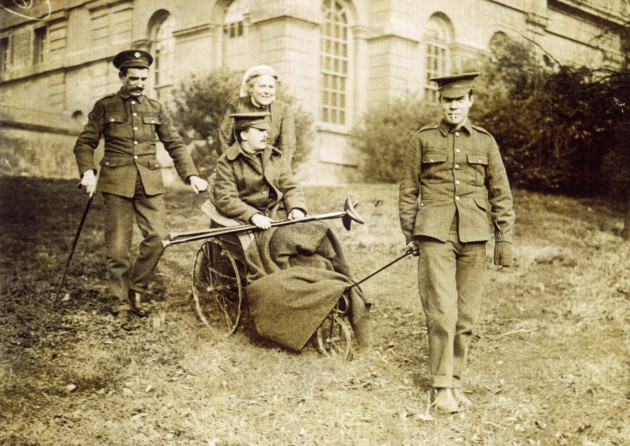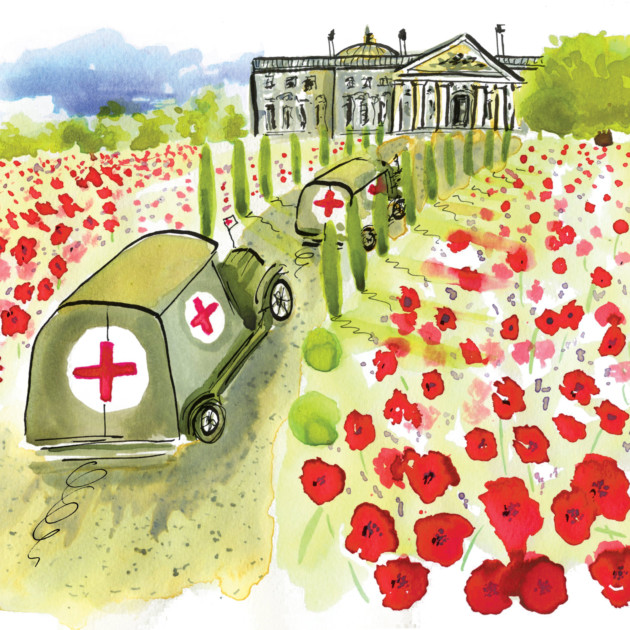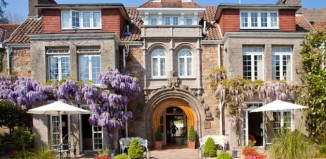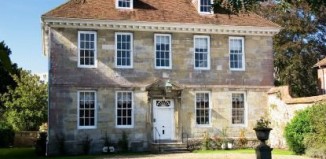Historic Houses Association commemorates the centenary of the outbreak of WW1 with new trail
Promotional feature.

The Historic Houses Association has recently launched a new online heritage trail to commemorate the centenary of the outbreak of World War One and to share the stories of some of Britain’s great houses during wartime.

The HHA represents 1500 privately-owned historic houses, castles and gardens and around 500 of these open their doors to visitors for days out, events, weddings or even as places to stay. In fact, HHA member properties welcome more than 13 million visitors each year and comprise more properties open to the public than the National Trust and English Heritage put together.
These historic houses, and the families and people that helped to sustain them, played an important role in the First World War as well as during other conflicts throughout history. The Historic Houses Wartime Trail shows the impact wars have had on those that stayed at home supporting their country during these difficult times.
And some of the most poignant stories have only recently been uncovered. Minterne House in Dorset, home of the Churchill and Digby families for 350 years, has the unique claim of being home to one of the last surviving war horses. During World War I, Kitty was the only infantry officer’s charger to have gone through the whole war on the strength of an infantry batallion, never missing a day’s duty.
In 2005, a large unmarked trunk was discovered in Minterne’s attic, belonging to Kennie, 11th Baron Digby. During the First World War and at the age of only 17, he commanded the 1st Battalion of the Coldstream Guards for six weeks, as all the other officers had been killed. After the war, he went on to become Colonel of the Dorset Yeomanry. Inside this trunk, a stunning saddle cloth which adorned his charger, Kitty, was discovered. As other items were discovered in the trunk, the story unfolded, having been locked away for nearly 75 years.
Kitty’s origins are uncertain; some say she was captured from a German officer in 1915, but in fact she was taken to war in December 1914 by Captain the Honourable Dermot Browne. He was killed in action at Loos in September 1915, at which point Kennie Digby took her as his charger. She spent the entire war in the trenches and returned to Minterne House where she became Kennie’s hunter. She gave birth to several polo ponies and point-to-pointers.
In 1937 Kitty had the extraordinary accolade of being honoured and presented, at The International Horse of the Year Show at Olympia, as one of the last surviving war horses at 30 years old. The saddle cloth she wore is still at Minterne House today.
Kitty had many adventures during the war, as explained on a citation outside her stable at Olympia: “Perhaps one of her narrowest escapes occurred a few days before the Armistice, during the advance towards Mauberge when two enemy shells in quick succession struck the ground within ten yards of her and neither shell burst.
“She served 6 years with the Bn. and was bought out of the Army at auction in December 1919, by Lord Digby for 29 Guineas and has been at grass ever since 1920, with the exception of the short time when she was brought in to be shown at Olympia in 1937 with other Veterans of the Great War.”
For more information on Kitty’s story and visiting Minterne House please visit: http://www.hha.org.uk/Property/1068/Minterne-Gardens
The Historic Houses Wartime Trail features many more fascinating stories from HHA Member properties across Great Britain and Northern Ireland, all of which have a tale to tell about their property in times of conflict, whether this be the Civil War or World War One.
By accessing the Historic Houses Wartime Trail, you can discover which house was converted to a military hospital by a Duchess who acted as Officer in Charge; which property in Northern Ireland was used as a secret US naval marine camp in World War II; and which property still commands the only legal private army in Europe!
To find out more about Britain’s great houses during wartime, access the Historic Houses Wartime Trail at http://www.hha.org.uk/friends-page/focus-on-properties/explorer-trails.html, and click on the pins to reveal the story at each property. Text can be downloaded and printed with the venue address and sat nav details, if you wish to visit. Please remember to check opening times of the properties you are planning to visit beforehand.
There are two other online trails to explore. On the Great British Royalty Trail you can learn more about properties which have all kinds of weird and wonderful links to our royalty – past and present. And the Great British Games Trail shows all properties with links to quirky games and sporting activities. The trails are all available on the HHA website at www.hha.org.uk so get exploring!
The HHA plays a key role in the preservation of these houses, which played an important part in conflicts and life during wartime. However, the costs of maintaining these houses are high and rising and they risk being left to ruin. The HHA does vital work to help preserve these properties for future generations, keeping them accessible to the public as part of the nation’s cultural heritage. We represents historic houses and gardens to government, promoting sensible policies for taxation, regulation, tourism promotion and planning.
From internationally renowned stately homes and castles such as Castle Howard in Yorkshire, to medieval manor houses such as Broughton Castle in Oxfordshire, each property is unique and has a special story to tell about the families who own and preserve them. Experience the grandeur of magnificent palaces and wander through rooms adorned with fine art, antiques, and beautiful tapestries and carvings. Discover intimate private family homes, all Grade I or II listed, hidden away in Britain’s beautiful countryside. Visit rugged Scottish castles, an Arts and Crafts terrace in London or intricate Dutch gardens.
By visiting HHA houses and gardens you can help to ensure the survival of these beautiful places for future generations to enjoy. By joining the HHA as a Friend, you can visit hundreds of these special places free of charge during normal opening hours. To find out more about Friends Membership or about our work, visit www.hha.org.uk
Follow the HHA on Twitter @Historic_Houses or visit our Facebook page www.facebook.com/HistoricHousesAssociation for the latest news and events.








